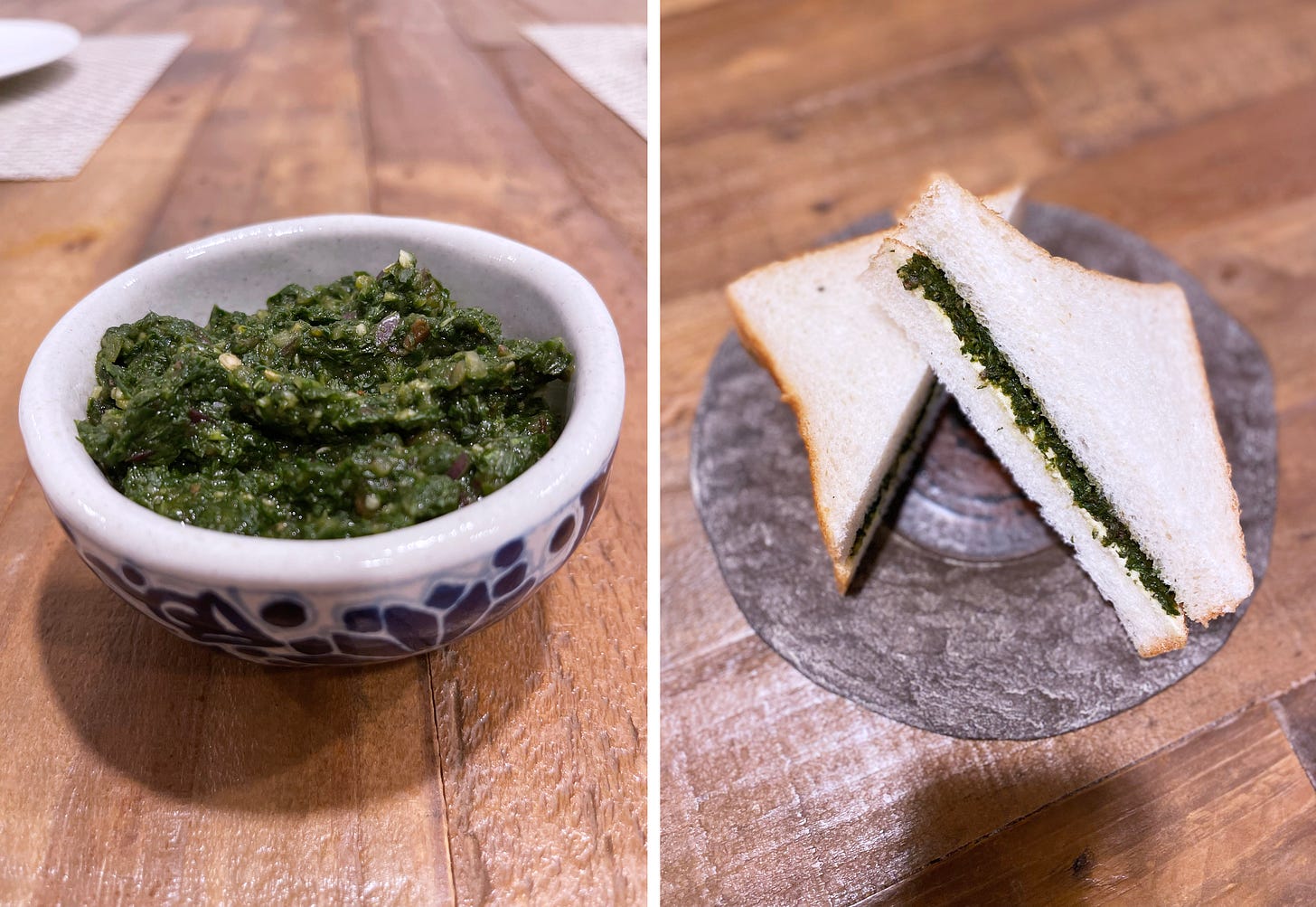Chutney Sandwich
In this beloved Bombay classic, two slices of soft white bread generously slathered with butter and a tangy cilantro-mint chutney come together, with or without vegetables, for an unforgettable bite.
Story and recipe developed in collaboration with Neena Moorjani.
A tale of the lost sandwiches
Green chutney is a ubiquitous condiment in Bombay. It is the Indian version of the Italian pesto, but without the cheese and nuts. The herb of choice in the green chutney is cilantro, more commonly known as coriander in India, but mint leaves are often included to add vibrancy to the sauce. Unlike pesto, however, there is also a tangy element to chutney, typically from lime, lemon or tamarind, and water—instead of oil—is used, albeit sparingly, to create the sauce. Usually served as a side with vada pav, samosa, dhokla, idli, dosa, kabab, and an endless list of other Indian foods, its presence is truly missed when it is absent. Imagine eating a samosa without green chutney. To a Bombayite, that would be food blasphemy! You would have to be very hungry to make that blunder, and you will be left only half-fulfilled with your samosa afterward.
While often served as a side, the green chutney takes center stage in the chutney sandwich. Two slices of soft white bread, slathered with butter and green chutney, stacked together, then cut into two triangles makes the perfect sandwich. The richness of the butter cuts through the herbaceous and tangy flavors of the chutney to strike a perfect balance.
Discover the full range of stories and recipes in the Culinary Index, and explore lesser-known ingredients in the Ingredient Spotlights—both now featured on Savor the Story homepage.
Unlike the strict list of ingredients that define the traditional Italian pesto, there is no traditional green chutney. Far from it. Variations abound, and no two cooks will make the same chutney. I have tasted many a green chutney in my life, and I have realized that my mom’s chutney is truly unique. The tangy element in her chutney—which comes from tamarind—is more pronounced. When used in a sandwich, it works better with the butter, compared to the less tangy chutney variants, to create a mouth-watering harmony.
While I mostly ate lunch at the school cafeteria, I could never refuse my mom's chutney sandwiches when she offered them for lunch. On one such occasion, I shared one of the sandwich triangles with a friend. Seeing how much she was enjoying the sandwich, all the others in our little clique—that didn't seem so little anymore—wanted a piece of it. Soon there was hardly anything remaining for me. The next time Mom offered the sandwiches for lunch, I asked her to give me twice as many, which she did. It didn't, however, matter. The sandwiches were almost all gone, once again, in a blink of an eye as soon as I opened my tiffin box. At other times, I did not even have to open the lunch box. As soon as I said that I did not want to go to the cafeteria for lunch, my friends would look for the sandwiches in my bag, and, just like that, my lunch evaporated. No matter how many times that happened, I never got used to it and was always left feeling disappointed, despite reminding myself that it was just a sandwich.
Walking down the memory lane has left me craving for a chutney sandwich, and I bet that you are ready for one too, so scroll down for the recipe. It is best made with soft white bread that is not overtly sweet. The closest equivalent to the Indian white bread that I have found in the U.S. is shokupan, which is Japanese milk bread. To make the sandwich more substantial, a couple of slices of tomato, boiled potato, and cucumber are commonly added in the theater or street-food version of this classic in Bombay. Enjoy simply or with the vegetables!




